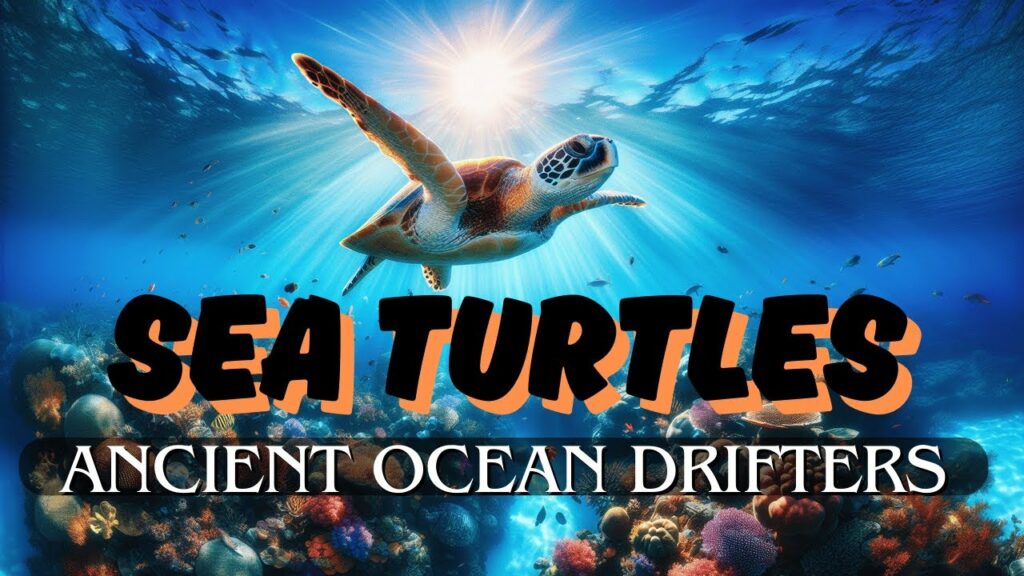Sea turtles are ancient mariners, having roamed the Earth’s oceans for over 100 million years, since the time of the dinosaurs. These majestic reptiles are an essential part of marine ecosystems, playing unique roles from maintaining the health of coral reefs to cycling nutrients into coastal areas.
The Seven Species of Sea Turtles
There are seven species of sea turtles found in oceans worldwide, each with distinct characteristics and habitats:
- Green Sea Turtle (): The largest of the hard-shelled sea turtles, named for the greenish color of its fat, not its shell. As adults, they are unique among sea turtles for being primarily herbivorous, feeding on seagrasses and algae.
- Loggerhead Sea Turtle (): Known for its massive head and powerful jaws, which are adapted for crushing hard-shelled prey like crabs, conchs, and horseshoe crabs.
- Hawksbill Sea Turtle (): Distinguished by its narrow, pointed beak, which it uses to extract its preferred food source—sponges—from crevices in coral reefs. They are crucial for maintaining the health of coral reef ecosystems.
- Leatherback Sea Turtle (): The largest of all sea turtles, reaching lengths of up to 6 feet and weights of over 1,400 pounds. Unlike other species, it lacks a bony shell and instead has a leathery carapace. It is a deep-diving, highly migratory species that feeds almost exclusively on jellyfish.
- Olive Ridley Sea Turtle (): One of the smallest and most abundant sea turtles, known for its unique mass-nesting behavior called arribada, where thousands of females come ashore to lay eggs on the same beaches.
- Kemp’s Ridley Sea Turtle (): The smallest and most critically endangered sea turtle. It is primarily found in the Gulf of Mexico and along the East Coast of the United States.
- Flatback Sea Turtle (): Found exclusively in the coastal waters of Australia, Papua New Guinea, and Indonesia. It has a flattened, smooth carapace and is an omnivore.
Life Cycle and Incredible Journeys
The life of a sea turtle is a remarkable and challenging journey. It begins on a sandy beach, where a female turtle, often returning to the very same beach where she was born, digs a nest and lays a clutch of soft-shelled eggs.
- Nesting: Female sea turtles typically nest at night, laying between 50 and 200 eggs per clutch, depending on the species. She will lay multiple clutches in a single nesting season before returning to the sea. The sex of the hatchlings is determined by the temperature of the sand in which the eggs incubate—warmer temperatures tend to produce females, while cooler temperatures produce males.
- Hatchlings: After about two months, the tiny hatchlings emerge from the nest and make a perilous dash to the ocean, guided by the natural light of the horizon. This journey is fraught with danger from predators.
- The “Lost Years”: Once in the ocean, juvenile sea turtles embark on a period known as the “lost years,” where their movements are difficult to track. They are carried by ocean currents and spend years in open-ocean habitats, feeding and growing.
- Maturity and Migration: Sea turtles can take decades to reach sexual maturity, ranging from 10 to 50 years depending on the species. Once mature, they will migrate vast distances between their foraging grounds and nesting beaches, a feat of navigation that is still not fully understood by scientists.
Conservation and Threats
Despite their ancient lineage and resilience, sea turtles face an escalating crisis, with six of the seven species classified as threatened or endangered. The primary threats are a result of human activities:
- Bycatch: Accidental capture in fishing gear, such as shrimp trawls, longlines, and gillnets, is the greatest threat to most sea turtle species.
- Habitat Loss and Degradation: Coastal development, beach erosion, and artificial lighting on nesting beaches disrupt the nesting process and disorient hatchlings.
- Pollution: Sea turtles often mistake plastic bags and other marine debris for food, leading to blockages and death. They can also become entangled in discarded fishing gear.
- Overharvesting and Illegal Trade: In many parts of the world, turtles are still hunted for their meat, eggs, and shells.
- Climate Change: Rising sea levels and more severe storms threaten nesting beaches. Warmer sand temperatures can also disrupt the male-to-female ratio of hatchlings, impacting future populations.
Protecting these ancient ocean travelers requires global collaboration and individual action. By supporting conservation efforts, reducing plastic consumption, and protecting their critical habitats, we can help ensure that sea turtles continue their epic journeys for generations to come.
